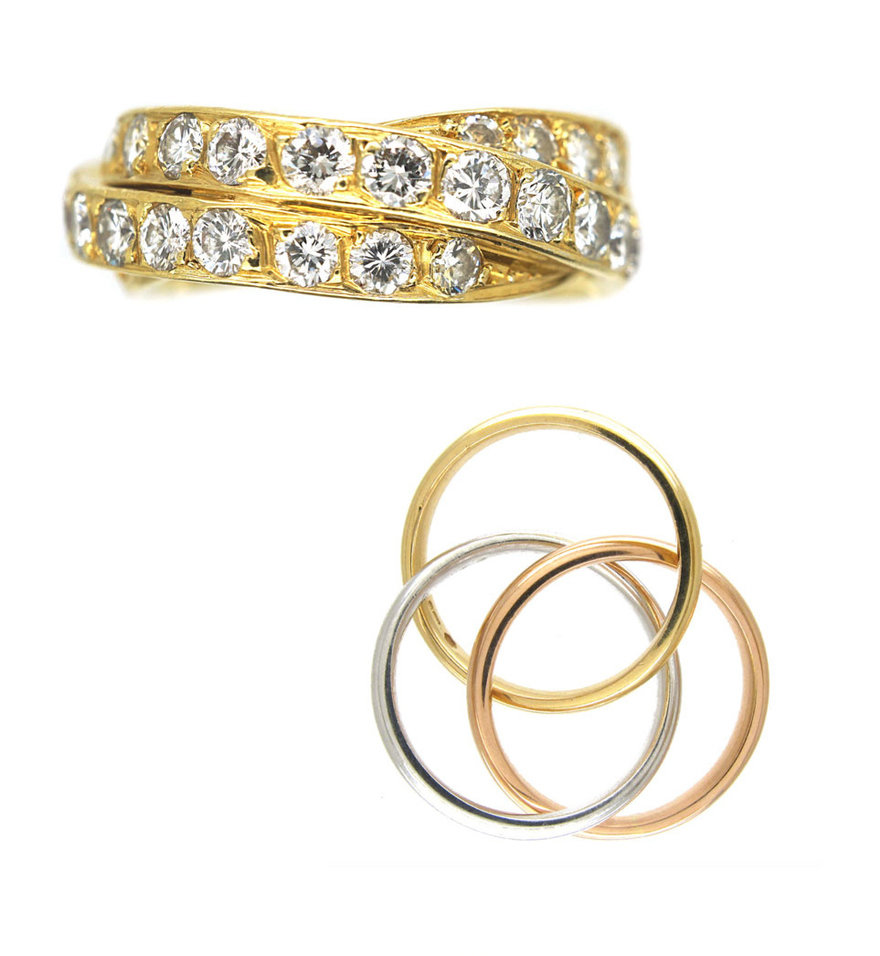One Way to Make Trinity Rings
The jeweler's version of "to make an omelette, you have to break a few eggs"
The so-called Russian Wedding Ring was a jewelry design that allegedly emerged from 19th-century Russia. It consists of three interlocked rings, each of them sized slightly larger than the target finger size, so that all three together will slide smoothly onto a finger.


In the 1920s Cartier co-opted the design, releasing their Trinity Ring. Each of the three rings was a different tone of gold: Rose, yellow and white. (In a bit of marketing spin, it was even claimed that the poet Jean Cocteau designed these for Cartier; in fact, it appears he was simply associated with them as the 20th-century version of an influencer.)


So how are these made? If you're familiar with casting, you'll have figured out that if they were all the same metal, you could cast it all as one piece with thinner supporting structures connecting the rings; you'd break those off, then grind and polish the rings smooth. It would likely be a nightmare for the craftsperson charged with the finishing tasks, as two rings would always be in the way while you worked on the third.
However, the casting method is out if you're using different metals. So how was it done? In this short video, silversmith Jessica Hickman-Woolcott of the Cognac Jewellery School shows you how. (Although she's using the same metal for all three rings, you get the idea.)
Enter a caption (optional)
-
oFavorite This
-
Q1Comment
K
{Welcome
Create a Core77 Account
Already have an account? Sign In
By creating a Core77 account you confirm that you accept the Terms of Use
K
Reset Password
Please enter your email and we will send an email to reset your password.

Comments
Casting this would actually be more difficult when it came time for cleanup and polish. The plaster would leave a fine texture that you'd have to spend even more time sanding and polishing smooth.